
Background information
New massage guns from Therabody: what they can and can’t do
by Patrick Bardelli
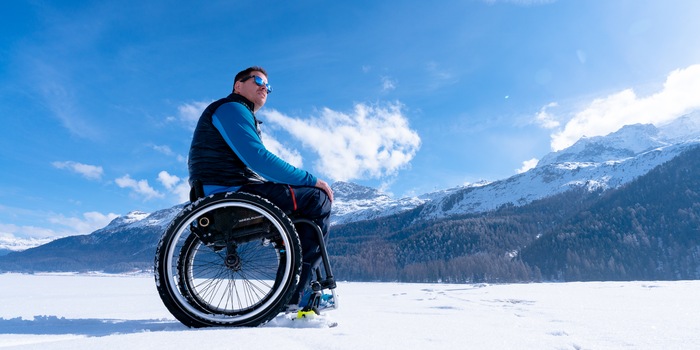
Patrick Mayer wanted to become a professional snowboarder, but after an accident he has been in a wheelchair for 23 years with incomplete paraplegia. Today, the 43-year-old produces products for people with disabilities. A story about strokes of fate and the fighting spirit of an athlete.
At the end of the day, he will have sportily overtaken the car in front of him at the foot of the Julier Pass and disappeared from my field of vision two bends later. Five hours earlier, Patrick Mayer is standing next to his minibus in a car park in Champfèr in the Upper Engadine, takes the wheelchair out of the boot and greets me with a broad smile on his face: "Hello Patrick."
Flashback. Patrick grows up in a sports-loving family in Tübingen, Baden-Württemberg. His mother is a sports teacher, his father an engineer and ski instructor. The Mayers often spend their winter holidays in Switzerland. At the age of nine, Patrick was standing on the halfpipe on the Jakobshorn in Davos and knew: "I want to be a professional snowboarder. In 1996, at the age of 17, he took a big step towards realising his dream when he was accepted at the sports boarding school in Ftan.
Then fate struck. On 31 March 1999, his brother died in tragic circumstances. A year later, on 1 April 2000, Patrick's career as a professional snowboarder came to an abrupt end before it had even really begun, in a boardercross race. The diagnosis: incomplete paraplegia.
Back in the here and now, we are standing by the frozen Lake Silvaplana and talking about Patrick's accident 23 years ago. Yes, we're both standing, because the man with the biceps of a bodybuilder is able to walk on crutches. But more on that later.
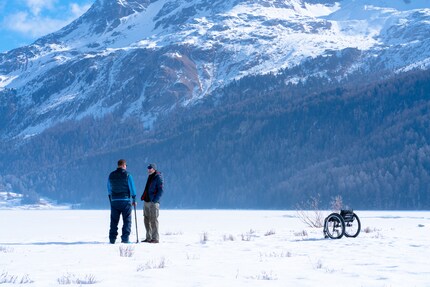
Where did the accident actually happen?
Patrick Mayer: After four years in Ftan, I was on the Santa Cruz team with Gian Simmen. The "Local Hero" boardercross race took place in Scuol on 1 April. A relatively small event.
And what exactly happened back then?
I rode at high speed to the right into a compression, then came a kicker. Somehow I wasn't focussed, hadn't finished the turn and flew off uncontrollably. While I was still in the air, I thought "shit, shit, shit" and knew that this was going to go really wrong. I flew brutally far and landed on my back like a cannonball on bare ice.
You had a back protector but didn't wear it during the competition. Why?
It was waiting for me in a sports shop in Scuol. I had borrowed the back protector especially for the competition, but I was running late and decided to drive straight from Ftan to the race track. As I said, it was a small event and I had been snowboarding for eleven years. I thought I didn't need the back protector. I was wrong.
And then?
The impact pushed my spine into my lungs. You have to imagine it like someone shooting a bowling ball into your back. I was unconscious for a few minutes. When I regained consciousness, I saw many faces looking down at me. I tried to stand up and realised that my legs were no longer working. I immediately realised what was happening. Paraplegia stood before me like a ghost at that moment. Then the helicopter took me to Innsbruck University Hospital, where my spine was straightened and fixed in an emergency operation.
What was the final diagnosis?
Incomplete paraplegia. This means that my spinal cord was not severed, but was severely bruised and injured in the accident. At first, I had no feeling from the navel down and was confined to a wheelchair. Over a period of three or four years, I regained certain functions so that I can now use my legs again bit by bit with the appropriate walking aids. However, this is very strenuous, which is why I am still dependent on a wheelchair. This condition won't change, but that's okay with me.
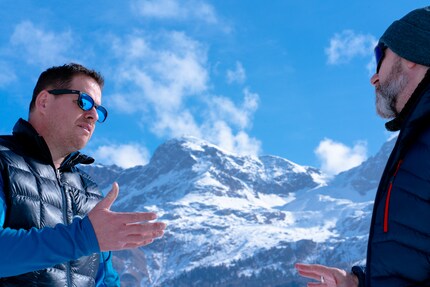
In the weeks following his accident, the young athlete is faced with an existential question: to live on or not, and if so, how? Patrick decides in favour of life. Rehabilitation in Tübingen follows. After the initial shock, he realises that he was lucky in his misfortune. He sees severely injured quadriplegics steering their wheelchair with their chin and realises that the accident could have turned out even worse.
Eight months after the accident, Patrick Mayer is back on the piste. No longer as a freestyler on a snowboard, but as part of the German Paralympic ski team. And then he tells me with a laugh how paraplegics in the team sometimes referred to him as a "hobby disabled person" or "luxury cripple". His laughter is infectious and I can't help but laugh along with him.
You can't do without humour, says Patrick. It's an important outlet and a way to counter the tragedy.
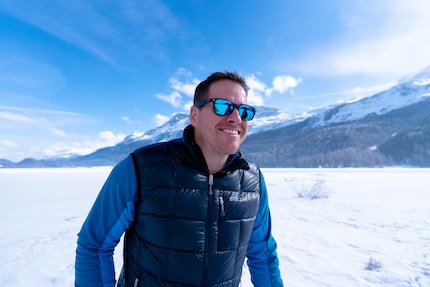
Today, the father of a five-year-old son and his company Nicon-Tec, he develops products for people with disabilities, which he markets under the brand name Wheelblades and Safety Foot, which he also sells via Galaxus.
Patrick, how and why did you become an entrepreneur?
A few years after the accident, I regularly spent time in Arosa with my partner at the time. We wanted to go for a walk and a friend of ours pushed me in my wheelchair like a handcart through the snow. There was something degrading about it, because I'm not a sack of potatoes or a crate of beer, I'm Patrick. And I wanted to be able to get around on my own. Even in the snow or on the beach in summer, for example.
And then, without further ado, you started developing runners for wheelchairs?
It can't be that we shoot robots to Mars, send high-resolution images to Earth, but people in wheelchairs still fail here because of the smallest barriers. I'm not one to moan. I think we simply need to utilise clever technology. For example, runners for wheelchairs.
You are the classic example of a self-made man. After the accident, you studied psychology and then became an entrepreneur "on the job", so to speak.
I studied psychology because I wanted to help people who had been thrown off course by strokes of fate like me. I wanted to help them get back on track. That was my plan. At some point, however, I realised that I would achieve more if I developed a product that could be used by thousands of wheelchair users, for example, to lead an independent life. My products are designed to relieve people with disabilities of some of the burden of being confined to their own bodies. Perhaps the runner on the wheelchair will replace a session or two with a psychologist.
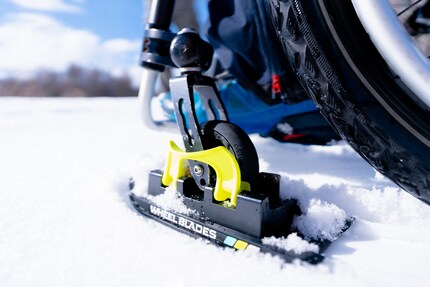
In 2007, Patrick Mayer began making the first prototypes of his runners using materials from the DIY store. The IPEK in Rapperswil helped him develop the first product, which was finally launched on the market in 2012. He is currently working on a multifunctional device called "Shadow", which adapts to various surfaces in just a few simple steps and is also suitable for sports in both summer and winter.
Patrick has been working on its development for five years now. This involves patent issues, financing, manufacturing costs, the search for the right sales partners and much more. And of course, marketing the existing products also takes up a lot of time. He receives a great deal of support from Detail AG in Zurich. Patrick is currently still short of around 100,000 francs to take the "Shadow" from prototype to series production.
Before we make our way home over the Julier Pass in the late afternoon in the Upper Engadine, Patrick Mayer gives me something to take with me on the road: "At the end of the day, life is about leaving something behind. Leaving a mark on other people's lives. In my own way, I try to achieve this with my products."
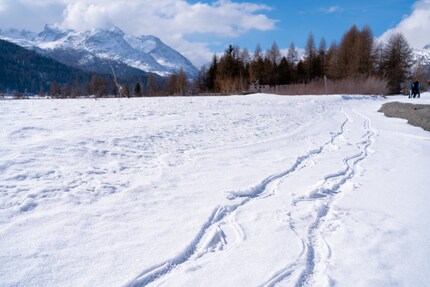
Cover photo: Oliver Fischer
From radio journalist to product tester and storyteller, jogger to gravel bike novice and fitness enthusiast with barbells and dumbbells. I'm excited to see where the journey'll take me next.
Interesting facts about products, behind-the-scenes looks at manufacturers and deep-dives on interesting people.
Show all